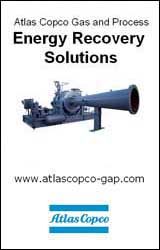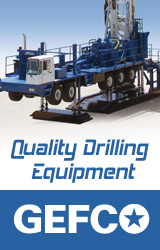Improved Techniques for Geothermal Exploration

These blind or hidden sites have no surface expressions, such as hot springs, to indicate a geothermal resource at depth. Studies by University of Nevada, Reno geologists Mark Coolbaugh and Lisa Shevenell estimate that most of the geothermal resources in the Great Basin are blind. Better characterization of known geothermal systems and improved exploration techniques are, therefore, critical for new discoveries, targeting drilling sites, and ultimate development. Research is helping to alleviate the large upfront costs associated with this development.
Blind geothermal resources are analogous to most petroleum deposits, as surface-oil seeps indicating large reservoirs at depth are rare. However, in contrast to the petroleum industry, robust databases indicating the most favorable settings or markers for geothermal systems are generally lacking.
Both temperature and permeability are critical for geothermal development, and so exploration techniques must be aimed at discovering permeable reservoirs of hot fluids. Such reservoirs reside in many geologic environments including volcanic provinces, regions of extending crust and high heat flow, and deep sedimentary basins where hot fluids in permeable sedimentary rocks exist.
For example, the northwestern parts of the Great Basin are extending at the highest rates today due, in part, to the influence of plate boundary motion associated with the San Andreas fault system. Higher rates of extension generate higher heat flow and greater dilation on faults. As a result, the northwestern part of the Great Basin has the greatest abundance of geothermal systems, and most of these systems are controlled by faults.
A combination of techniques is usually needed to locate and develop a single geothermal system. Three, of several methods enabling resource identification and reducing the risks in drilling expensive geothermal wells are structural studies, shallow temperature surveys, and geochemical analyses.
Structural studies
Structural studies involve analysis of the geometry and movement histories of faults, which permits estimation of the most likely channel ways for hot fluids. Geothermal exploration in the Great Basin is limited without basic knowledge of which fault and fracture patterns, stress conditions, and stratigraphic intervals are most conducive to hosting geothermal reservoirs.
The University of Nevada, Reno, through its College of Science and the Nevada Bureau of Mines and Geology, has undertaken a thorough inventory of the structural settings of known geothermal systems in the region. Of more than 200 geothermal fields catalogued in the past year, it has been found that steps in normal (extensional) fault zones serve as the most favorable setting, hosting nearly one-third of the systems. Such areas are characterized by multiple overlapping fault strands, increased fracture density, and enhanced permeability.
Other common settings include fault intersections, where multiple minor faults typically connect major structures, and fluids can flow readily through highly fractured, dilational quadrants; as well as normal fault terminations, where major faults splay into a myriad of closely spaced minor faults that increase permeability.
Recently active faults typically lie within or near most geothermal systems. However, geothermal systems appear to be rare along faults with large offsets, possibly due to reduced permeability in thick zones of clay gouge (which develops along such faults), and periodic release of stress in major earthquakes.
The steps, terminations, and intersections of faults correspond to long-term, critically stressed areas, where fluid pathways would more likely remain open in networks of closely spaced fractures. To date, this work has led to the discovery, development, and/or expansion of several geothermal fields in Nevada, such as Desert Queen, Desert Peak, and Salt Wells.
Geochemical analysis
Through the use of various geothermometers, geochemical analysis of water from springs or wells allow for estimating the temperature of underlying geothermal systems. Some of the recent advances in geothermometers, as applied to Great Basin systems, have been time-consuming and offered only modest improvements in accuracy of reservoir temperature estimation.
As a response to this, Shevenell has been experimenting with a new method involving theoretical mixing models, which involves combined use of quartz, no steam loss, and chemical-corrected geothermometers. Several trials suggest this new mixing method is superior to others, and can predict realistic reservoir temperatures in the Great Basin and other environments, such as Central America. This method has significant potential for identifying blind geothermal systems at depth.
Shallow temperature surveys
Even though hot springs may not be present above most of the geothermal systems in the Great Basin, high-temperature groundwater in many places has heated up rocks and soils to the extent that it’s becomes possible to detect this excess heat by measuring temperatures at a depth of one to two meters below the surface.
Recent research has improved the speed, accuracy, and cost of running shallow temperature surveys. Surveys of this type have recently identified at least seven previously unknown hidden geothermal systems in Nevada, and drilling at several of these sites has verified shallow thermal groundwater at temperatures near boiling. Continued use of shallow temperature surveys, in conjunction with improved structural analysis and fluid geochemical studies, holds the promise to significantly expand the production of electricity from geothermal resources.
Ongoing research will provide the baseline studies that are absolutely needed if geothermal is going to expand in Nevada and across the country.
James Faulds is a geologist and research professor in the University of Nevada, Reno’s Bureau of Mines and Geology in the College of Science.
Nevada Bureau of Mines and Geology, University of Nevada, Reno
www.nbmg.unr.edu
Author: James E Faulds











